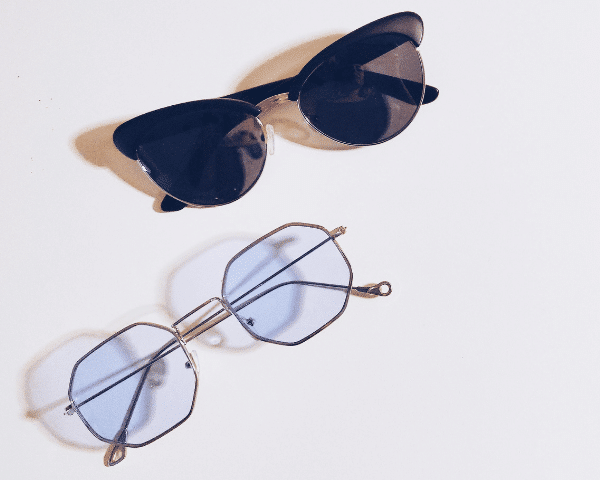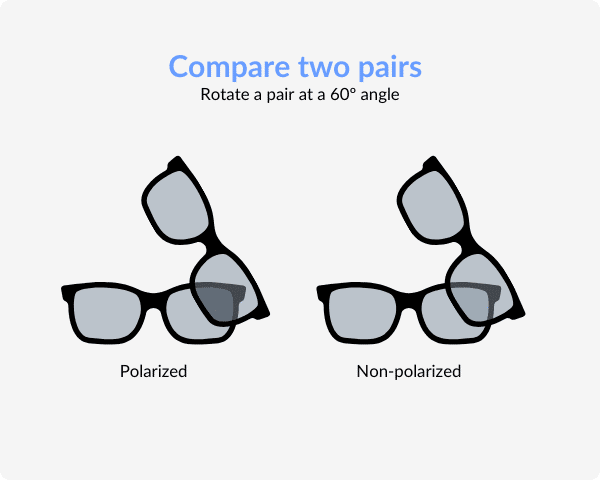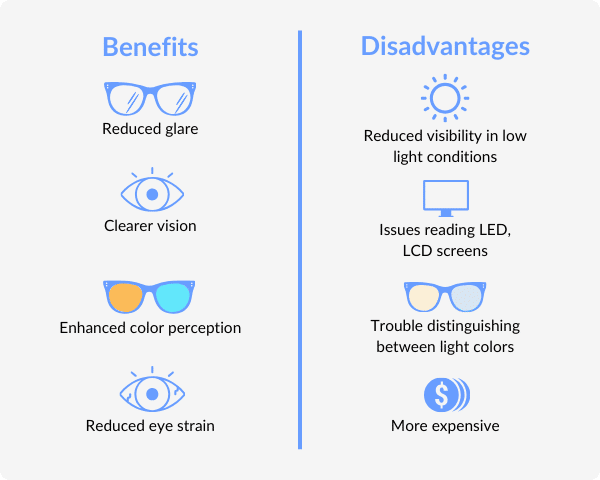How to Tell if Your Sunglasses are Polarized

Reviewed by
Beck Jinnette
Polarized lenses offer the perfect blend of style and protection, serving as your best defense against the harsh light from sun glare. There are many situations in which this is essential as it can greatly enhance both comfort and visual clarity.
Polarization technologies have been around for a while. First Invented in 1936 by Edwin H. Land, they have now become a standard for certain types of eyewear.
You may even already own a pair of polarized lenses without knowing it! That said, don’t fret: there are a few simple ways to find out if your lenses are polarized or not.
What are polarized lenses?
Light waves scatter chaotically at different angles when they hit uneven surfaces. When they reach smooth surfaces, like the water’s surface or polished metal, they reflect neatly in a uniform direction instead.
When bright sunlight strikes a mirror-like surface, the vertical light beams spread out and become horizontally polarized light. We experience these horizontal light rays as glare – a blinding light that can be quite annoying and causes us to squint.
Polarized shades address this issue by filtering out horizontal light.
Since they selectively block light traveling in specific directions with a special chemical coating, they are capable of significantly reducing glare and can improve visual clarity and comfort.
This makes wearing polarized lenses ideal for improving visibility and reducing eye strain in bright environments, especially around reflective surfaces.
How to tell if sunglasses are polarized
If you think polarized glasses would be a good match for your lifestyle but aren’t sure if your current ones have polarization or not, you’ve come to the right place. Follow these steps to determine if a pair of sunglasses has a polarization filter.
Compare your polarized sunglasses to others

If you already have a pair of sunglasses that you know are polarized, you can use them for a comparison test. This is how:
- Take out your two pairs of sunglasses and hold the pair you’re testing close to you. Place the other pair on a flat surface further away, ideally 1 to 2 inches (2.5 to 5.1 cm) apart. Make sure the pair you’re testing is nearest to your eyes, with the polarized lens positioned further away.
- Align the lenses so you can look through both at the same time, but be careful not to let them touch to avoid scratching the coatings.
- Look through both sunglasses and tilt the polarized pair 90°. When two polarized lenses overlap at opposing angles, they create an almost pitch-black surface. If You can’t see anything through the lenses, then you’ll know they’re polarized. Otherwise, they’re regular sunglasses.
Test them on a reflective surface
You can use a reflective surface, like a shiny tabletop or a body of water, to test if lenses are polarized or not. Follow these steps:
- Hold your sunglasses approximately 6 to 8 inches (15 to 20 cm) in front of your eyes. Make sure you can see the reflective surface through one of the lenses.
- Rotate the sunglasses to a 90-degree angle..
- Adjust the angle of your sunglasses if the initial position doesn’t reduce the glare. Observe the glare through the lens as you hold your sunglasses at the adjusted angle. If your sunglasses are polarized, you should notice much less glare.
Look at a screen through your lenses
Digital LED screens and LCD displays (like computer screens or smartphones) have anti-glare technology that can be useful to identify polarized sunglasses. This is how:

- Adjust your electronic device to its brightest setting and display a white screen. Put on your sunglasses and hold your device at eye level. For accurate results, it’s important to face the screen directly.
- Tilt your head 60°. While looking directly at the screen, gently tilt your head to the left or right. This action changes the angle at which the polarized light from the screen interacts with your sunglasses.
- If your sunglasses are polarized, the screen will likely darken significantly or turn black as you move your head. A lack of any significant change instead indicates that there’s no polarization on the lenses.
DID YOU KNOW?
Since they cut down the glare from the light reflecting off the water, polarized sunglasses can help fishermen easily spot fish under the surface.
Wearing polarized vs non-polarized sunglasses
Wearing polarized sunglasses offers a significant advantage in environments where glare is a common issue. This is because polarized lenses are specifically designed to block glare when aligned correctly with the direction of the reflected light.
Their ability to reduce glare allows them not only to improve visibility, but also increases contrast and color perception. This leads to enhanced visual clarity while also helping minimize eye strain on sunny days.
This makes polarized lenses especially beneficial to those who spend time in bright sunlight, for example people who like playing outdoor sports. The relief from constant squinting can make activities like driving, fishing, and skiing safer and much more enjoyable.
That said, the use of polarized sunglasses is not without its drawbacks. One notable disadvantage is their performance in low light conditions, where they can significantly reduce visibility. Due to the polarization filter, wearers may even struggle to distinguish between light colors.

Additionally, polarization can cause difficulties when viewing LED and LCD screens. Because of how polarized sunglasses work, it can be challenging to read screen displays (like a computer monitor), GPS devices, or instrument panels while wearing them.
They are also more expensive than their non-polarized counterparts, though for many, the eye health benefits, visual comfort and protection provided by polarized lenses outweigh the drawbacks.
Alternatives include photochromic and standard tinted lenses for overall brightness reduction and protection from UV light.
Blue light glasses are also a good option for people who spend a lot of time looking at a computer screen. These are non-polarized lenses that apply different technologies and can work better for lcd screens and artificial light related eye strain.
Make the right choice for you
When deciding for or against polarized lenses, it’s important to consider your own lifestyle. The best eyewear not only protects your vision but also aligns with your daily needs to improve your quality of life.
Don’t hesitate to ask our opticians if you have any questions about polarized sunglasses or any other type of lens. And if you do think that polarization is the right fit? Test your sunglasses to find out if you need to keep your eyes open for a good pair.
Related articles


Related articles










































